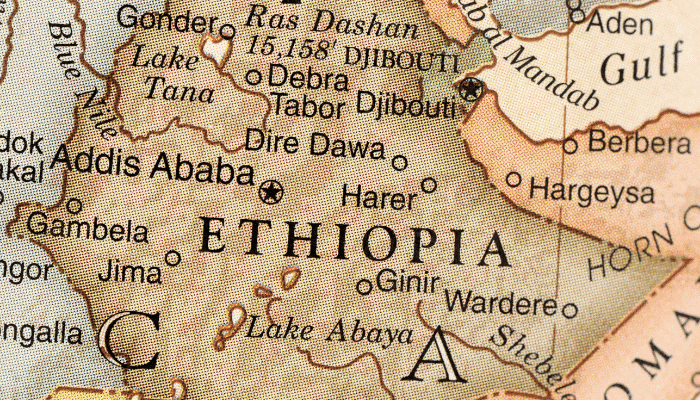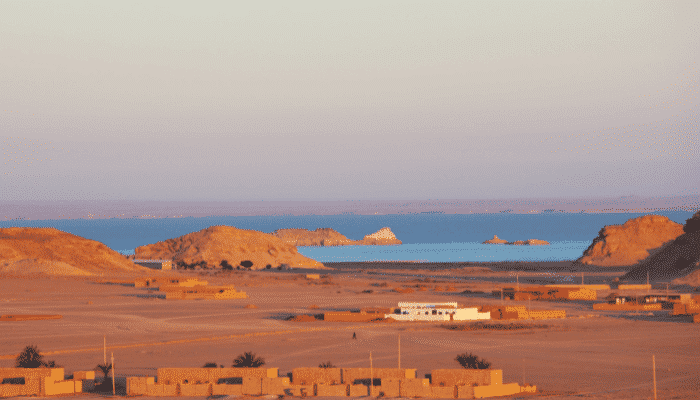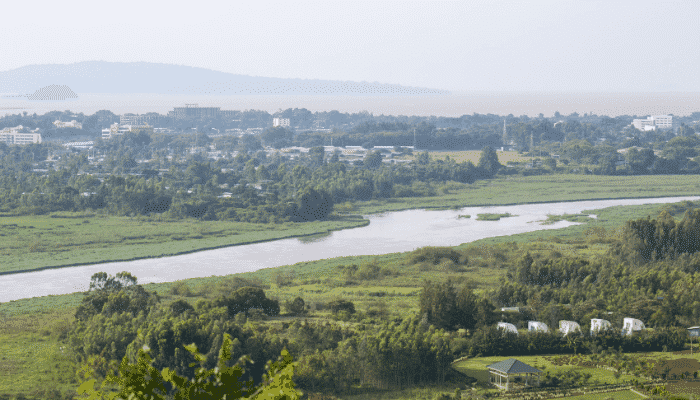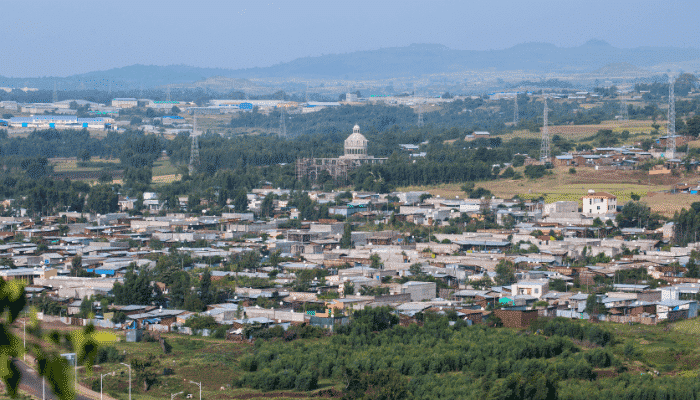8 Major Ports in Ethiopia
A landlocked African nation, Ethiopia is a diverse country with a rich culture going back to prehistoric times. The nation has suffered the turmoils of war, and has a poor economy, resulting in slow infrastructural development and widespread poverty.
Due to its geographical location, Ethiopia lacks seaports but it has developed 8 inland ports or dry ports to facilitate its import-export trade with the world. These port development projects have been financed by the World Bank since the country suffers from budgetary limitations.
Ethiopia was dependent on the Eritrean ports of Massawa and Adab, however trade links severed after the Eritrean-Ethiopian war in 1998. Presently, Ethiopia conducts the majority of its trade through the Djibouti port and plans to construct at least 35 more dry ports.
Modjo Dry port
The Modjo dry port is the major inland port in Ethiopia, located about 75 km from the capital city of Addis Ababa. The port became operational in early 2009, with a container handling capacity of 700. The government had further plans to develop Modjo port into the country’s premier logistics hub. Hence it has undergone much expansion, refurbishment and development to meet global maritime standards of dry port facilities.

It is the first and biggest container port facility in the landlocked country and is well connected to the Djibouti port that handles a majority of cargo destined for Ethiopia. Though undergoing expansion, it remains functional due to the lack of operational ports in landlocked Ethiopia.
This port can handle and store 14,500 containers at once and about 75% -78% of the nation’s imports arrive at this port, from where they are transported to the other major Ethiopian cities.
It offers an array of services such as handling cargo bound for Ethiopia coming from Mombasa or Djibouti ports, loading and unloading operations, storing containerized cargo, customs and clearance functions, banking etc.
The dry port currently receives around 1000 to 1500 containers every 24 hours. The dry port spans 150 hectares of which about 32 hectares are utilized for keeping containerized cargo including parking of heavy vehicles like trucks and numerous operational services.
According to the 2018 annual report by ESLSE, the handling capacity of the Modjo port has plummeted to 18,000 TEUs and it can deal with 136,040 TEUs of containers at once. The port equipment includes 11 reach stackers, 16 forklifts and 10 tractors. The port’s favourable geographical location makes it the premiere and multimodal dry port of the country handling all kinds of trade cargo.
However, the Modjo port is facing operational issues such as high transport costs, issues around port digitization and equipment, port management etc. After it is completed, the port would have cold storage facilities for refrigerated cargo and dry bulk like fertilizers, pesticides, grains etc.
This has garnered the attention of the authorities that are working in the direction to mitigate these problems and instil confidence among logistics companies, customers and other stakeholders regarding the reliability and efficiency of port services. A modern Terminal Operating system is being installed at the port.
Also, two warehouses covering 1600 square meters each have been constructed at the Modjo port to handle fertilizer imports and their storage before distribution. The warehouses have a capacity of 100,000 quintals each.
Semera Dry Port
A second dry port became operational in 2010, called the Semera Port, situated about 558 km from the capital city. It specifically handles imports of automobiles and other vehicles.
Situated in the Afar National Regional State in the city of Semera, this port is strategically located just 270 km from the port of Djibouti. It spans 160 hectares within which 3 hectares are utilized for container terminal services such as temporary storage of containers etc.
Semera Port can handle about 1185 TEU of containerized cargo at once and its annual handling capacity of containers has increased to 2380 TEUs approximately.
Kallity/ Qality Dry port
It is one of the important dry ports in Ethiopia. It was designated as a dry port recently, in 2014 to ease the distribution of goods in Ethiopian cities. The port handles about 19,858 TEU annually.

The port is owned and managed by the government. It offers facilities such as customs and clearance service and storage facilities for container goods.
The port faces numerous issues such as poor infrastructure, lack of storage space and warehouses and also trained manpower. Containers are stored in an open, unsheltered space, leading to some cargo getting damaged. The port has around 260 employees out of which 200 are manual labourers responsible for loading and unloading goods.
Though the port possesses 6 reach stackers, 13 forklifts and 6 tractors for handling 40 feet containers, only 3 reach stackers and 4 forklifts are in workable condition. The customers complain of delays and unsatisfactory services hence proper governance and port refurbishment is the need of the hour. Budget limitations have stopped the government from investing in the Kalliti port but authorities plan to develop it in future.
Dire Dawa Dry Port
The Dire Dawa Port now spans 34 hectares and comprises a container terminal, a huge warehouse, administrative offices and spaces, direct railway linkages etc. The port expansion project began in 2020 and it would become operational from January 2022, as per statements from ESLSE.
The port’s handling capacity is estimated to be 10,000 containers, an eight-fold increase from its erstwhile handling capacity. This is happy news for Ethiopia as this port is important for the region, its expansion would reduce transportation costs and also lessen the distribution time of cargo.
Situated in the city of Dire Dawa, which is an industrial region and just 313 km from the port of Djibouti, this port is crucial for the distribution of grain as Dire Dawa has dry, sandy soil unfit for growing crops. Secondly, the city also has other industries such as manufacturing and cement plants, repair workshops for railways, coffee processing units, tanning animal hides etc. Products of these localised factories are important export products from Dire Dawa port to neighbouring cities and regions.
Kombolcha Dry Port
It was constructed in 2013 and covered 15 hectares, and around 5 hectares was used for container handling services. Its handling capacity is about 4900 TEUs.
However, in 2019, the government of Ethiopia decided to relocate the old Kombalcha dry port and also expand the port and its facilities, since it was distant from the newly built railway line and the Kombolcha industrial park. The new port is estimated to be completed in two years and would span 35 hectares, with a handling capacity of 10,000 containers.
The new port would be situated in the industrial region and would aid the growth of transport companies and local businesses by promoting smooth and speedy import and export of cargo.
Woreta Dry Port
It is a recently constructed dry port in Wereta in the Amhara Regional State. The port construction took 3 million US Dollars and it is said to ease Ethiopia’s trading operations with neighbouring Sudan. The region of Wereta is famed for its sesame seed cultivation and hence the exporters of this product would now be able to transport their shipments via Woreta port to neighbouring regions.

Woreta is the eighth dry port in the landlocked nation, spanning 3 hectares with an additional 17 hectares set apart for future expansion and redevelopment. The port’s handling capacity is 1000 containers at a time and comprises a sheltered storage space, a container terminal, administrative offices and a few eateries.
Woreta port would generate employment facilities including aiding trading companies who want to transport goods from the North-Western part of the country.
Mekelle Dry Port
The Mekelle Dry Port was constructed to lessen the increased cargo burden of the Modjo Port. Built-in 2012, Mekelle port is just 15 km away from Mekelle Industrial Park and spans 42 hectares. Expansion of this port began in 2018, to increase its handling and storage capacity.
Gelan Dry Port
There is another port called the Gelan dry port that handles imports of vehicles such as vans and cars. It is the only Ethiopian port that handles shipments of rolling cargoes. The port has two huge warehouses offering storage facilities and three small administrative buildings.
Recently, the country is also planning to build 2 new dry ports. Jima and Jigjiga are the decided locations for port construction due to the lack of port facilities and the huge distance of Dire Dawa port from Berbera port, in Somalia. Jima port once constructed would allow efficient trade and transfer of agricultural goods, fruits and vegetables to and from Jima and Berbera port.
Thus, Ports in Ethiopia play a major role in facilitating trading operations, especially difficult for a landlocked country. These ports would not only generate employment for locals but save transportation costs and reduce transit time.
You might also like to read:
- 5 Major Ports In Liberia
- 3 Major Ports of Angola
- 6 Major Ports in Ghana
- 7 Major Ports of South Africa
- 9 Major Ports in Kenya
Disclaimer: The authors’ views expressed in this article do not necessarily reflect the views of Marine Insight. Data and charts, if used, in the article have been sourced from available information and have not been authenticated by any statutory authority. The author and Marine Insight do not claim it to be accurate nor accept any responsibility for the same. The views constitute only the opinions and do not constitute any guidelines or recommendations on any course of action to be followed by the reader.
Do you have info to share with us ? Suggest a correction
Latest Maritime Knowledge Articles You Would Like:
Subscribe To Our Newsletters
By subscribing, you agree to our Privacy Policy and may receive occasional deal communications; you can unsubscribe anytime.
Web Stories





















